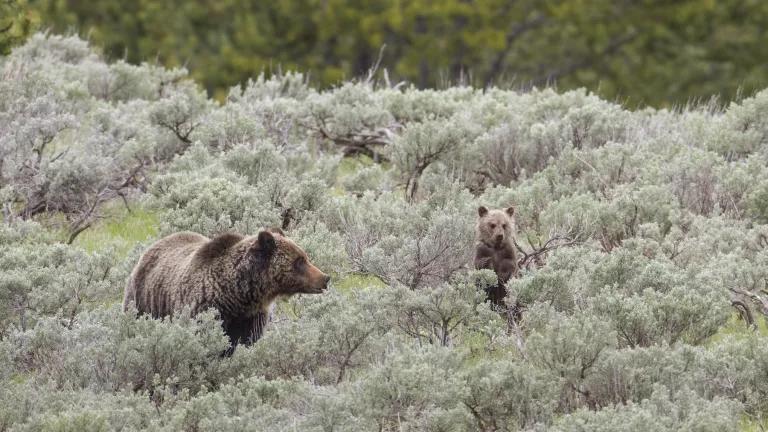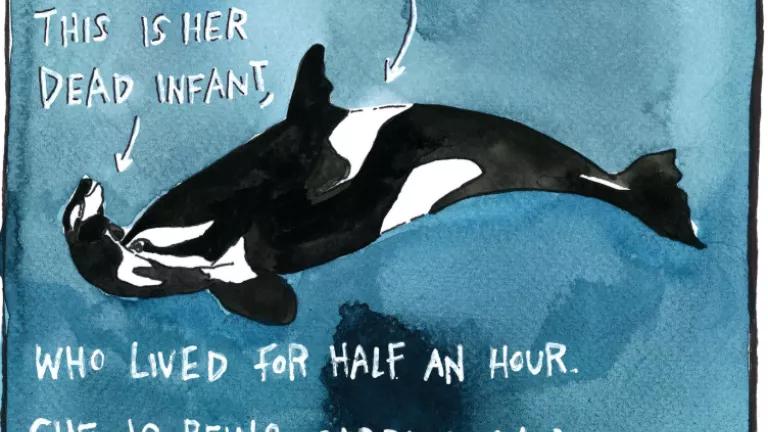
The Southern Resident orcas are at their lowest abundance in 40 years. The last time the population dropped this low, it was because we humans violently removed 47 individuals to sell to marine parks and aquariums, effectively erasing an entire generation. Today, the root cause of the population’s dive toward extinction is more complicated and multiheaded.
One big problem is that the whales need salmon. They are often visibly thin and several have already starved to death. Another problem is that most of the whales’ habitat—where they hunt for salmon—isn’t protected by the Endangered Species Act. But with all of our help, that could soon change.
In 2005, the federal government formally recognized that this unique population of orcas is at risk of extinction. A year later, the feds designated 2,560 square miles of Washington State’s inland waters as critical habitat for the Southern Residents. Many people think of the Southern Resident orcas as Puget Sound or San Juan Island orcas. These magnificent animals like to summer in those inland waters, and that is where we humans can most easily view them from the shore, the Washington State Ferries, whale watching vessels, a canoe, or a kayak. But right now—during the stormy winter—the whales are out to sea.
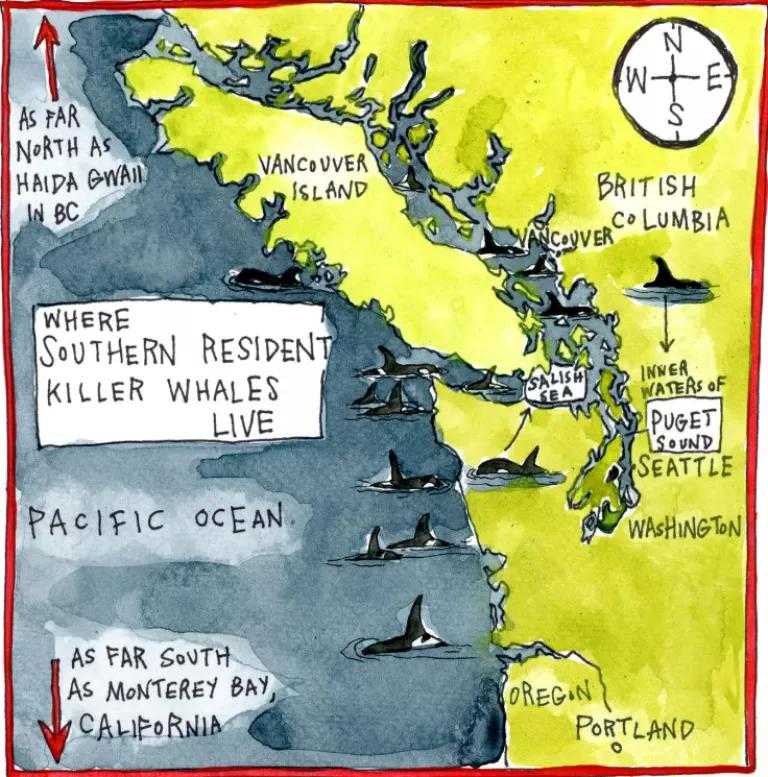
Most of the year, these closely-knit whale families travel the Washington, Oregon, and northern California coast hunting for their favorite food: Chinook salmon.
For the past 13 years, only a small portion of the orcas’ range has enjoyed increased federal protections. In that time, the orcas’ abundance has oscillated a bit, but the overall trend has been of decline—despite being federally recognized as endangered.
The stated purposes of the Endangered Species Act is to conserve endangered species and "the ecosystems upon which [they] depend," 16 U.S.C. 1531(b), a mandate linking successful conservation of species to the habitats that they require. Indeed, a report by the Center for Biological Diversity found that animals with federally protected critical habitat are more than twice as likely to be recovering as species without it.
Critical habitat is meant to protect the “home” of the species. It includes the current range of the species, but it also helps ensure that the biological features (e.g. prey) and physical features (e.g. water quality and sound levels) of the animal’s home are protected. Protecting only the orcas’ summer inland habitat is a bit like saying a big family only needs a roof, heating, electricity, furniture, etc. for one room of their house.
Southern Resident orca habitat use is dynamic, with hunting, breeding, calving, traveling, and resting occurring throughout their range. The conservation value of coastal habitat is therefore high, especially in areas known to be rich in salmon. From observed sightings, satellite tagging, and prey sampling, the Southern Residents are known to utilize specific areas at times that coincide with Chinook salmon returning to different river systems, particularly the Columbia Basin.
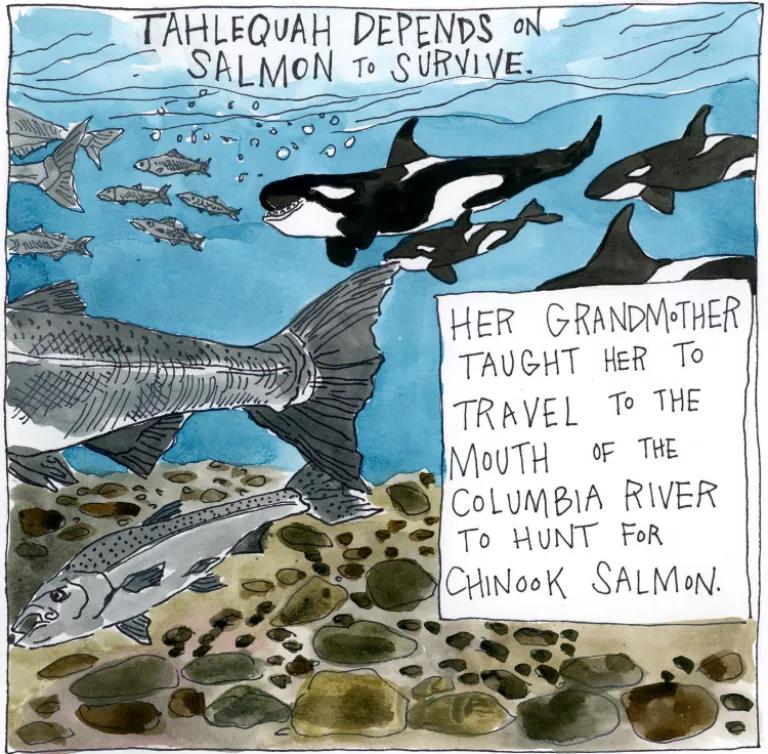
Here’s a map that compares the habitat currently designated as critical with the expanded habitat that many orca advocates would like to see included in any change. The map includes satellite tag data (green dots) showing where the whales travel:
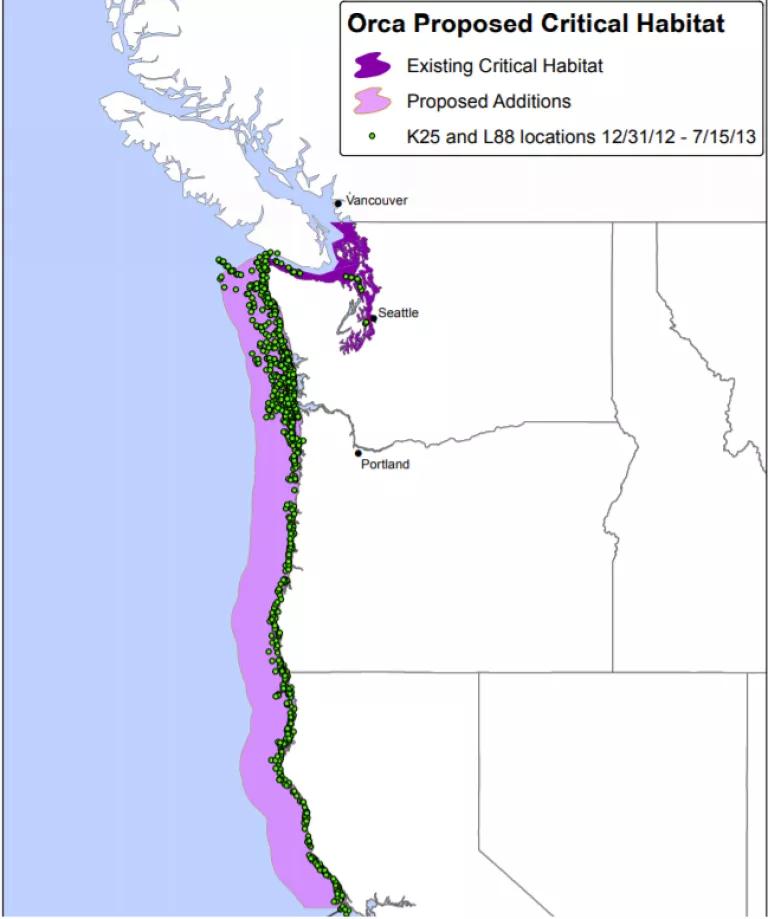
Unfortunately, Columbia Basin salmon are in trouble too. Pacific salmon have now been extirpated from at least 40% of their historic habitat, with some populations returning at less than 1% of their historic numbers. The development and alteration of watersheds, estuaries, and nearshore environments have all contributed to salmon decline. If we don’t get serious about restoring healthy ecosystem function in our Pacific Northwest rivers, climate change impacts are expected to cause an additional loss of 22% of current salmon habitat.
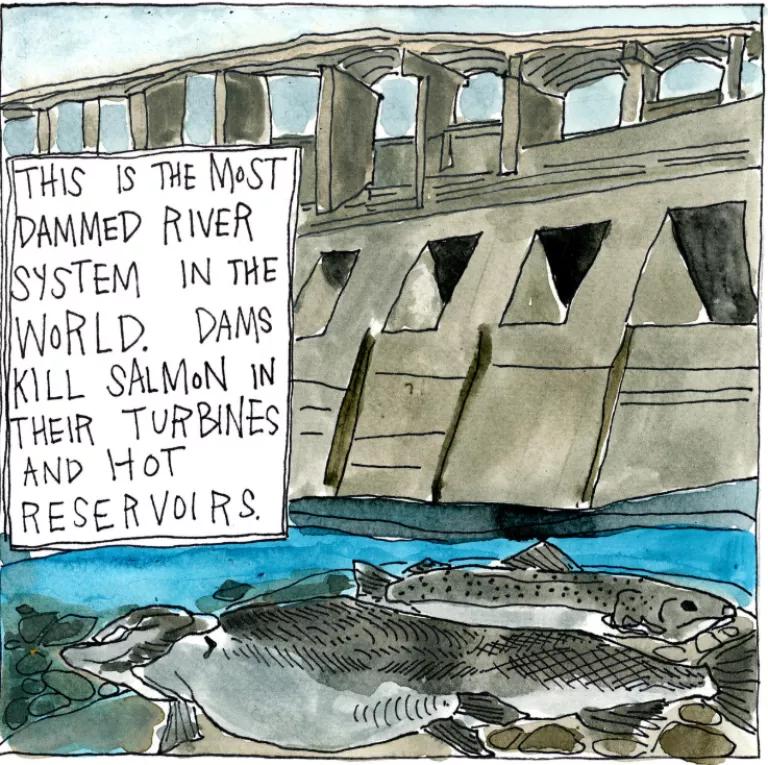
We know that a lack of their favorite prey, Chinook salmon, is the principle threat to survival for the whales. We know from aerial photo studies that the whales decline in body condition and often miscarry their calves between October and May, when they frequent the coastal waters of Washington, Oregon, and northern California. It’s time that we fully protect the coastal waters that we know are essential to support this endangered population.
The good news is that the federal government is re-evaluating the orcas' critical habitat and has proposed expanding it. The feds have excluded a large part of the Washington coast for the U.S. Navy, and we will be submitting technical comments opposing that over-sized free pass for the Navy and making some other suggestions for improvement, but, overall, the draft proposal is serious progress. You can help by supporting expanded critical habitat for the whales. You can submit written comments to National Marine Fisheries Service, 7600 Sand Point Way NE, Building 1, Seattle, WA 98115, Attn: SRKW Critical Habitat Proposed Rule or submit them electronically and learn more here.
What were you doing when the Southern Resident orcas went extinct? I hope I don’t ever have to answer that question. But I’m up late tonight writing this blog because I'm troubled for the orcas and salmon. I worry too for myself, my daughters, and all of us that love the magic of a world still rich with the wild things.




